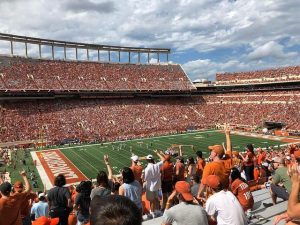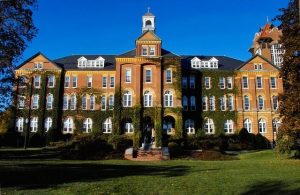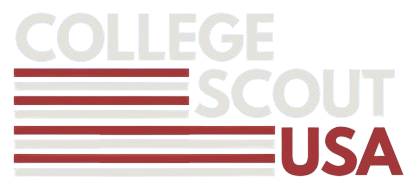5 Types of US Universities Explained for International Soccer Players
Discover the 5 main types of US universities, their costs, campus life, and soccer opportunities for international players.

Understanding the landscape of US universities helps you choose the right academic fit, football standard, and budget. There are also a lot of misconceptions about what US universities are really like, which we covered in our recent blog. Below is a practical guide to the main types of institutions, where they are commonly found, what soccer conferences you will often see, example schools for your images, typical costs for international students, and what campus life feels like in each setting. For international players, understanding these differences is vital before understanding how UK players get US scholarships or committing to a coach or programme.
1. Public State US Universities – Big, Powerful Institutions

What they are: Large, publicly funded universities, usually with multiple colleges inside one institution. Often 20,000–60,000 students, with the biggest schools (like Ohio State or Texas) enrolling more than 70,000, with a broad programme choice.
Where they are: In every state, often in state capitals or major college towns. Examples include Ann Arbor, Chapel Hill, College Park, Austin, Gainesville, Los Angeles.
Soccer divisions and conferences:
-
-
Most flagship public universities compete in NCAA Division 1, often in power conferences like the ACC, Big Ten, Pac-12, SEC or Sun Belt.
-
Some regional campuses are in NCAA Division 2, and a handful in NCAA Division 3.
-
Soccer conference sponsorship varies, so a school’s soccer league may differ from its American football or basketball league.
-
Typical costs: International tuition is usually higher than domestic. Expect roughly 20,000 to 45,000 USD per year for tuition, then 10,000 to 18,000 USD for housing, meals, and fees. Merit aid and athletic scholarships can reduce net cost.
Campus life: Big stadiums, strong school spirit, packed calendars of events, many clubs and societies, and access to major research facilities. Teams often train in top settings with full-time support staff.
2. Private US Universities – Elite and Prestigious Options
What they are: Selective, privately funded institutions with strong reputations and significant endowments. Class sizes can be smaller than big publics, but they are still sizeable universities with professional-level resources. Usually 5,000–20,000 students, though some (like USC or NYU) are closer to 30,000–40,000.
Where they are: Often in major cities or historic college towns. Examples include Palo Alto, Boston, Chicago, Durham, Washington DC.
Soccer divisions and conferences:
-
-
The majority compete in NCAA Division 1, often in conferences like the ACC, Big East, West Coast Conference or American Athletic.
-
Some strong private schools are in NCAA Division 2.
-
Typical costs: Sticker prices are high. Tuition can be 40,000 to 65,000 USD per year, with living costs of 14,000 to 20,000 USD. Many private universities offer strong need-based and merit aid which can bring the real price down, especially for top students or recruits.
Campus life: Polished facilities, strong alumni networks, and a professional feel. Academic expectations are high. Student services and career support are usually excellent.
3. Liberal Arts Colleges – Personal and Student-Focused Choices

What they are: Liberal arts colleges are usually smaller, undergraduate-focused institutions that emphasise close teaching, small seminar-style classes, and a broad education across the arts and sciences. For international players, it is important to know that not all liberal arts colleges are in NCAA Division 3 – a significant number of liberal arts institutions actually compete in the NAIA, especially those with a Christian or values-based mission. Typically 1,500–3,000 students, with some as small as under 1,000.
Where they are: Common in smaller towns and suburbs, especially in the Northeast and Midwest, though NAIA liberal arts schools are often found in the South and Midwest.
Soccer divisions and conferences:
-
-
Many well-known liberal arts colleges compete in NCAA Division 3, often in leagues like the NESCAC, UAA, SCIAC, Liberty League or Centennial.
-
Some play in NCAA Division 2, especially in the Sunshine State or Gulf South conferences.
-
A large number of NAIA colleges are liberal arts in size and mission, with strong soccer traditions. These schools often combine small class sizes with competitive football programmes.
-
Typical costs: Sticker tuition is similar to private universities, often 45,000 to 65,000 USD. NCAA D3 schools do not offer athletic scholarships, but generous academic and need-based aid is common. In contrast, NAIA and D2 liberal arts schools can combine athletic scholarships with academic awards to make them more affordable.
Campus life: These campuses often feel close-knit, with strong community ties and professors who know students by name. Liberal arts colleges provide a good balance between serious football and a personal academic experience. NAIA liberal arts schools in particular can give internationals both playing opportunities and significant financial aid.
4. Faith-Based Christian Colleges – Supportive, Values-Driven Campuses
What they are: Many faith-based universities in the US are small liberal arts colleges with a Christian mission. Some are comprehensive universities with graduate programmes, while others keep the traditional liberal arts model of small classes and close faculty interaction. For international athletes, these schools often provide both competitive soccer and a strong community environment. Population ranges widely, but many are 2,000–10,000 students, with the largest (like BYU) having over 30,000.
Where they are: Spread across the country, but especially common in the South, Midwest, and West Coast.
Soccer divisions and conferences:
-
-
A large share of NAIA schools are faith-based liberal arts colleges, competing in leagues like the Sooner Athletic, Kansas Collegiate, Crossroads, and Wolverine-Hoosier.
-
Many also play in NCAA Division 2, such as the Sunshine State or Gulf South Conferences.
-
A few bigger Christian universities compete in NCAA Division 1.
-
Typical costs: Tuition is generally 25,000 to 45,000 USD in the NAIA, and 35,000 to 60,000 USD in NCAA D1 or D2. NAIA colleges in particular use a mix of athletic and academic aid, making them some of the most affordable private options for international players.
Campus life: These schools emphasise values, community, and often include chapel or faith-based activities. The environments are typically supportive and team-oriented, though some have lifestyle codes students must follow. For many international athletes, they provide both a strong football platform and a welcoming, family-like atmosphere.
5. Community Colleges (Junior Colleges) – The Smart, Affordable Gateway
What they are: Two-year colleges that award associate degrees and certificates. Many international footballers use this route to build academics and playing resumes before transferring to a four-year university. Soccer competes in the NJCAA. Most have 5,000–15,000 students, but big ones in Texas, California, and New York can exceed 20,000–30,000.
Where they are: In nearly every metro area and many towns. Common in Texas, Florida, California, New York, and the Midwest.
Soccer divisions and conferences:
-
-
All compete in the NJCAA (National Junior College Athletic Association).
-
Typical costs: Usually the most affordable entry point. International tuition often ranges from 8,000 to 15,000 USD per year, with housing and meals varying widely by location. Athletic scholarships and housing support exist at some colleges.
Campus life: More commuter based, fewer traditions than four-year universities, but strong team environments and good coaching in top programmes. Great option if you want to lower costs, adjust to US academics, and then transfer.
How Divisions and Conferences Affect Your Soccer Choice
US universities belong to athletics conferences that organise league play and championships. Soccer placement can differ by sport, so always check men’s and women’s soccer specifically. For top Division I soccer you will often see the ACC, Big Ten, Big East, Sun Belt, West Coast Conference, American Athletic and others. Strong programmes also exist in NCAA Division II and in the NAIA, and NJCAA teams regularly send players on to four-year schools.
Price Snapshots and Scholarships at US Univerisities
Prices vary by institution and by scholarship package. A quick guide for international students:
-
-
Community College (NJCAA): $8,000–$15,000 tuition, usually the lowest gateway and very transfer friendly.
-
Public State University: $20,000–$45,000 tuition, plus $12,000–$18,000 living costs.
-
Private University: $40,000–$65,000 tuition, with living costs of $14,000–$20,000, often offset by strong academic or need-based aid.
-
Liberal Arts Colleges: $25,000–$65,000 tuition. Sticker prices can match private universities, but many offer generous academic or need-based aid, which often brings the net cost down significantly.
-
Faith-Based Colleges: $20,000–$60,000 tuition depending on level. Many NAIA and D2 schools in this category combine athletic scholarships with academic aid.
-
Remember: The sticker price is rarely what a recruited player actually pays. Aid packages, scholarship budgets, and your academic profile all impact the final cost.
Campus Life, What to Expect
-
-
Public state US universities, big crowds, big rivalries, many majors, and a surplus of clubs. You will feel the scale from day one.
-
Private US universities, highly resourced labs and libraries, selective admissions, strong professional networks.
-
Liberal arts colleges, small classes, residential experience, close contact with coaching and academic staff.
-
Faith-based colleges, community feel, values-driven life on campus, strong team identity.
-
Community colleges, focused on development and transfer, with strong soccer cultures at the top programmes.
-
Final Tips for Choosing Well
The biggest strength of the US system is its variety. There is a university for every type of student-athlete. Want small, intimate classes where professors know you by name? A liberal arts college could be perfect. Looking for the best possible degree to stand out on your CV? Aim for a prestigious private US universities. Want the buzz of packed stadiums and big rivalries? Public state US universities deliver that. Or maybe you want an affordable gateway into the system with the chance to transfer later – then a community college might be ideal.
If you want expert guidance choosing the right pathway, then College Scout USA can help you.


